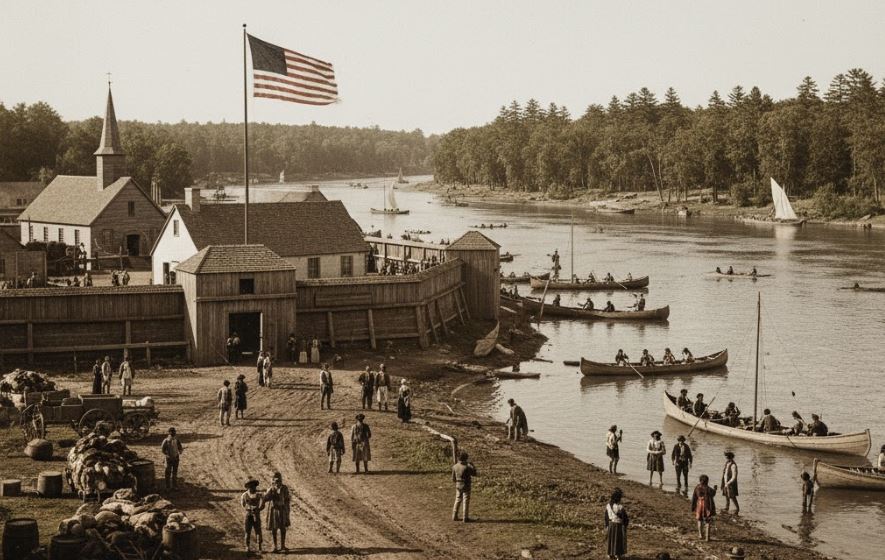Let's explore the historical names and influences that defined Michigan before its statehood.
Land of the Great Lakes Tribes
For thousands of years before European arrival, the lands of present-day Michigan were home to several prominent Native American nations. These tribes were integral to the region's ecology and trade networks.
Key indigenous groups included:
- Anishinaabe (Ojibwe/Chippewa, Odawa/Ottawa, Potawatomi): These three closely related tribes, often referred to as the "Council of Three Fires," inhabited different parts of the Lower and Upper Peninsulas. They were skilled hunters, fishers, and traders, with deep knowledge of the lakes and forests.
- Wyandot (Huron): Though primarily centered around Lake Huron and later moving south, the Wyandot also played a significant role in the early history and trade of the region.
The name "Michigan" itself has Native American origins. It is derived from the Ojibwe word "Michigama," meaning "large water" or "large lake," referring specifically to Lake Michigan.
New France: "The Upper Country"
The first Europeans to explore and claim the Michigan region were the French, beginning in the early 17th century. Explorers like Étienne Brûlé and Jean Nicolet were among the first to venture into the Great Lakes, establishing trade with Native American tribes, primarily for furs.
The French claimed this vast territory as part of New France, often referring to the Great Lakes region as "Pays d'en Haut" (meaning "the Upper Country"). Key French settlements and trading posts were established, such as:
- Fort de Buade (St. Ignace, 1671)
- Fort Pontchartrain du Détroit (present-day Detroit, 1701), founded by Antoine de la Mothe Cadillac. This became a crucial strategic location controlling the narrows between Lake Huron and Lake Erie.
French influence was significant, shaping place names and establishing early European presence.
British North America: After the French and Indian War
Following their defeat in the French and Indian War (Seven Years' War), France ceded its North American territories east of the Mississippi River to Great Britain in the Treaty of Paris of 1763. This brought Michigan under British control.
During this period, the British primarily maintained the existing French settlements and trading posts. Tensions with Native American tribes, notably Pontiac's Rebellion (1763-1766), challenged British authority, particularly at Detroit. Despite the change in European sovereignty, British control over the remote parts of the region was often contested and difficult to enforce.
The Northwest Territory and Beyond
After the American Revolutionary War, the Treaty of Paris of 1783 formally transferred British claims to the United States. However, the British maintained control of vital posts like Detroit until 1796.
The land that would become Michigan was initially part of the vast Northwest Territory, established in 1787. This territory was organized for settlement and eventual statehood, with provisions for public education and the prohibition of slavery.
As American settlement progressed, portions of Michigan were successively administered under:
- Indiana Territory (1800-1805)
- Michigan Territory (1805-1837)
The Michigan Territory was officially created on January 11, 1805, with Detroit as its capital and William Hull as its first governor. This was the most direct predecessor to the state of Michigan.
The Toledo War and Statehood
The Michigan Territory grew rapidly, fueled by immigration and land speculation, especially after the opening of the Erie Canal. As it moved toward statehood, a significant border dispute arose with Ohio over a strip of land known as the "Toledo Strip." This conflict, primarily a bloodless constitutional and political skirmish, became known as the "Toledo War."
Ultimately, Michigan agreed to relinquish its claim to the Toledo Strip in exchange for the western two-thirds of the Upper Peninsula. While initially viewed as a poor trade, the Upper Peninsula proved to be incredibly rich in timber and mineral resources (copper and iron), becoming a vital asset for the new state.




